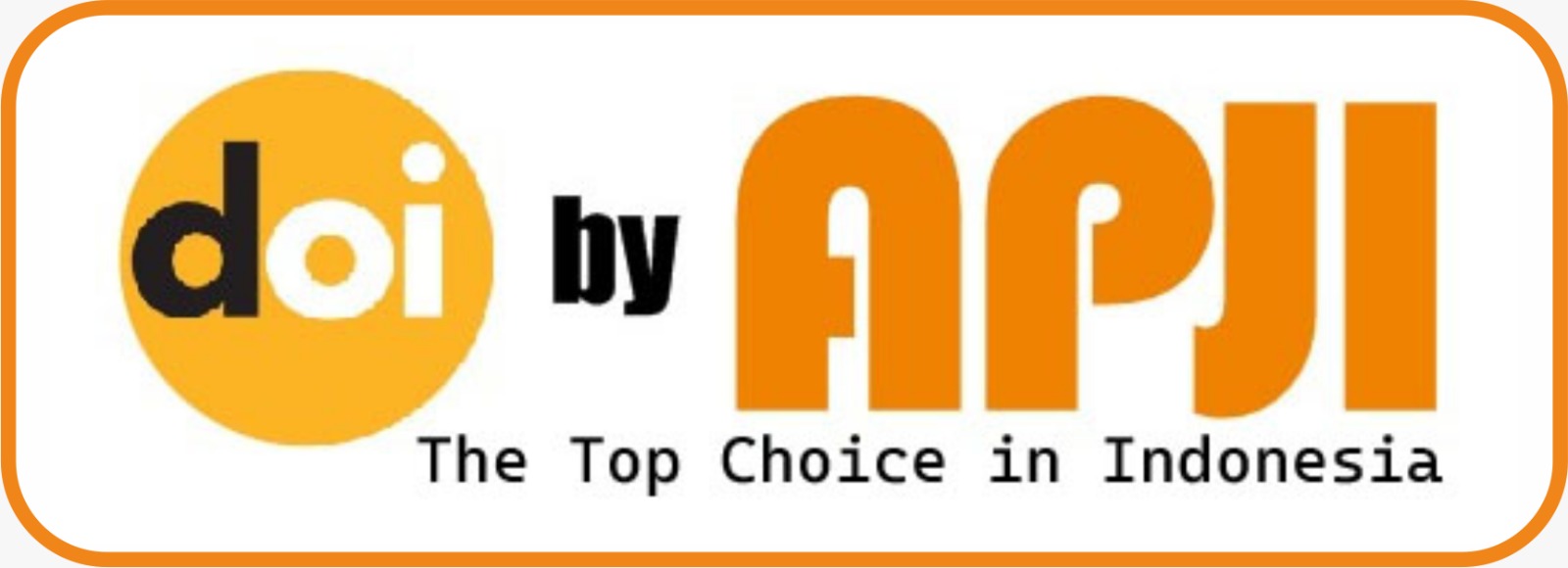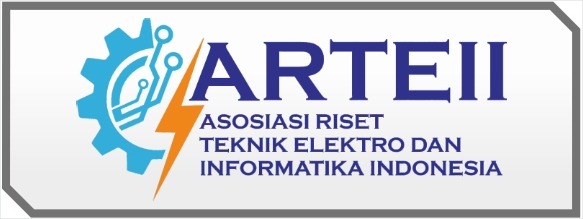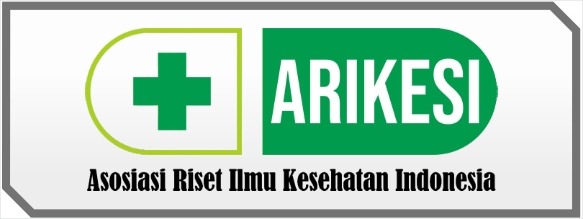Sustainable Wastewater Treatment: Recent Progress in the use of Bio-Waste-Derived Adsorbents for Organic Dye Removal
DOI:
https://doi.org/10.69930/ajer.v1i3.172Keywords:
Bio-waste, organic dyes, Adsorption, Application, SustainabilityAbstract
There are serious health and environmental hazards associated with the growing amount of organic dyes in wastewater from sectors like food processing, leather, and textiles. These pollutants are frequently ineffectively removed by traditional wastewater treatment techniques. Adsorbents made from bio-waste have become a viable substitute because of their high removal efficiency, affordability, and sustainability. The adsorption of organic dyes is facilitated by the distinct surface chemistries of these adsorbents, which are made from a variety of biomass sources. Through synthesis and modification approaches, recent research has concentrated on enhancing these materials' adsorption capacity, selectivity, and overall performance. Adsorbents made from bio-waste have potential uses in pollutant degradation, nutrient recovery, and value addition in addition to dye removal. But issues like leaching and long-term stability need to be carefully thought out. This review highlights the recent advancements in the application of bio-waste-derived adsorbents for organic dye removal from wastewater, emphasizing their potential contributions to sustainable wastewater treatment and resource recovery.
References
Aragaw TA, Bogale FM. Biomass-based adsorbents for removal of dyes from wastewater: A review. Front Environ Sci. 2021;9. https://doi.org/10.3389/fenvs.2021.764958
Hamad HN, Idrus S. Recent developments in the application of bio-waste-derived adsorbents for the removal of methylene blue from wastewater: A review. Polymers. 2022;14(4):783. https://doi.org/10.3390/polym14040783
Piquet ABM, Martelli MC. Bioadsorbents produced from organic waste for dye removal: A review. Res Soc Dev. 2022;11(3) https://doi.org/10.33448/rsd-v11i3.26506
Abdelhamid HN, Mathew AP. Cellulose-based materials for water remediation: Adsorption, catalysis, and antifouling. Front Chem Eng. 2021;3. https://doi.org/10.3389/fceng.2021.790314
Maxwell JC, Baker BC, Faul CFJ. Controlled removal of organic dyes from aqueous systems using porous cross-linked conjugated polyanilines. ACS Appl Polym Mater. 2023;5(1):662-671. https://doi.org/10.1021/acsapm.2c01718
Lan D, Zhu H, Zhang J, Li S, Chen Q, Wang C, Wu T, Xu M. Adsorptive removal of organic dyes via porous materials for wastewater treatment in recent decades: A review on species, mechanisms and perspectives. Chemosphere. 2022;293:133464. https://doi.org/10.1016/j.chemosphere.2021.133464
Etim EE, Mathias D, Samuel HS, Yakubu S, Nweke-Maraizu U. Binary metal ions adsorption of manganese and silver from aqueous solution using tea leaf and tea fibre: Kinetics, thermodynamics, and isotherm studies. J Appl Sci Environ Manage. 2024;28(8):2393-2403. https://doi.org/10.4314/jasem.v28i8.1
Samuel H, Makong FD, Ori M. Green chemistry strategies for mitigating microplastic pollution in aquatic environments. Asian J Environ Res. 2024;1(2):73-82. https://doi.org/10.69930/ajer.v1i2.67
Samuel HS, Okibe G, Undie DA, Ochepo E. Carbon-based adsorbent for remediation of per- and polyfluoroalkyl substances from industrial wastewater. Appl J Environ Eng Sci. 2024;10(2):85-98. https://doi.org/10.48422/IMIST.PRSM/ajees-v10i2.48765
Ekpan FM, Ori MO, Samuel HS, Egwuatu OP. Emerging technologies for eco-friendly production of bioethanol from lignocellulosic waste materials. Eurasian J Sci Technol. 2024;4(3):179-194. https://doi.org/10.48309/ejst.2024.429106.1119
Batool A, Valiyaveettil S. Chemical transformation of soya waste into stable adsorbent for enhanced removal of methylene blue and neutral red from water. J Environ Chem Eng. 2021;9:104902. https://doi.org/10.1016/j.jece.2020.104902
Siddiqui SI, Fatima B, Tara N, Rathi G, Chaudhry SA. Recent advances in remediation of synthetic dyes from wastewaters using sustainable and low-cost adsorbents. In: The Impact and Prospects of Green Chemistry for Textile Technology. Elsevier; 2018:471-507.
Almeida EJR, Corso CR. Decolorization and removal of toxicity of textile azo dyes using fungal biomass pelletized. Int J Environ Sci Technol. 2019;16:1319-1328. https://doi.org/10.1007/s13762-018-1728-5
Hassan MM, Carr CM. Biomass-derived porous carbonaceous materials and their composites as adsorbents for cationic and anionic dyes: A review. Chemosphere. 2021;265:129087. https://doi.org/10.1016/j.chemosphere.2020.129087
Zhou Y, Lu J, Zhou Y, Liu Y. Recent advances for dyes removal using novel adsorbents: A review. Environ Pollut. 2019;252:352-365. https://doi.org/10.1016/j.envpol.2019.05.072
Nasar A, Mashkoor F. Application of polyaniline-based adsorbents for dye removal from water and wastewater—a review. Environ Sci Pollut Res. 2019;26:5333-5356. https://doi.org/10.1007/s11356-018-3990y
Ni Law X, Cheah WY, Chew KW, Ibrahim MF, Park YK, Ho SH, Show PL. Microalgal-based biochar in wastewater remediation: Its synthesis, characterization and applications. Environ Res. 2022;204:111966. https://doi.org/10.1016/j.envres.2021.111966
Roy U, Manna S, Sengupta S, Das P, Datta S, Mukhopadhyay A, Bhowal A. Dye removal using microbial biosorbents. In: Green Adsorbents for Pollutant Removal. Springer; 2018:253-280.
Pearce CI, Lloyd JR, Guthrie JT. The removal of colour from textile wastewater using whole bacterial cells: A review. Dyes Pigment. 2018;58:179-196. https://doi.org/10.1016/S0143-7208(03)00064-0
Sarvajith M, Reddy GKK, Nancharaiah YV. Textile dye biodecolourization and ammonium removal over nitrite in aerobic granular sludge sequencing batch reactors. J Hazard Mater. 2018;342:536-543. https://doi.org/10.1016/j.jhazmat.2017.08.064
Singh NB, Nagpal G, Agrawal S, Rachna. Water purification by using Adsorbents: A Review. Environ. Technol. Innov. 2018;11:187–240. https://doi.org/10.1016/j.eti.2018.05.006
Liu Y, Shao Z, Reng X, Zhou J, Qin W. Dye-decolorization of a newly isolated strain Bacillus amyloliquefaciens W36. World J. Microbiol. Biotechnol. 2021;37:1–11. https://doi.org/10.1007/s11274-020-02974-4
Comroe M, Kołasiński KW, Saha D. Molecules. 2022;27(17):5653. https://doi.org/10.3390/molecules27175653
Ebers L, Arya A, Bowland CC, Glasser WG, Chmely SC, Naskar AK, Laborie M. Biopolymers. 2021;112(6). https://doi.org/10.1002/bip.23431
Soliman A, Alamoodi N, Karanikolos GN, Doumanidis CC, Polychronopoulou K. Nanomaterials. 2020;10(11):2198. https://doi.org/10.3390/nano10112198
Asava-arunotai M, Htet TL, Bansiddhi A, Lertworasirikul A, Surawathanawises K, Muangnapoh T, Kandasamy B, Kidkhunthod P, Panomsuwan G, Jongprateep O. Materialia. 2024;36:102139. https://doi.org/10.1016/j.mtla.2024.102139
Foo KY, Hameed BH. Chemical Engineering Journal. 2011;173(2):385-390.
Amjah AN, Abdulhameed AS, Jawad AH. Biomass Conv. Bioref. 2023. https://doi.org/10.1007/s13399-023-04764-y
Ao W, Fu J, Mao X, Kang Q, Ran C, Liu Y, Zhang H, Li J, Liu G, Dai J. Renewable and Sustainable Energy Reviews. 2018;92:958-979. https://doi.org/10.1016/j.rser.2018.04.051
Martinez V, Stolar T, Karadeniz B, Brekalo I, Užarević K. Nature Reviews Chemistry. 2023;7(1):51-65.
Cagnetta G, Yin Z, Qiu W, Vakili M. Materials. 2023;17(12):3006. https://doi.org/10.3390/ma17123006
Maruyama H. Surfaces. 2024;7(2):208–224. https://doi.org/10.3390/surfaces7020014
Kameni H, Fouodjouo M, Zé W, Aldoori H, Gherdaoui CE, Supiot P, Maschke U, Laminsi S. Brazilian Journal of Development. 2023;9(2):7607-7639. https://doi.org/10.34117/bjdv9n2-098
Samuel HS, Etim EE, Nweke-Maraizu U, Yakubu S. Advancements in green chemistry: sustainable synthesis and processes. Journal of the Belarusian State University. Chemistry. 2024;2: 3–16. EDN: HZEXZW
Kandel DR, Kim H, Lim J, Poudel MB, Cho M, Kim H, Oh B, Nah C, Lee SH, Dahal B, Lee J. Chemosphere. 2022;309:136638. https://doi.org/10.1016/j.chemosphere.2022.136638
Menaa B, Merzouk A, Mekhalfia A, Addad A, Lefebvre G. Scientific Reports. 2023;13(1):1-15. https://doi.org/10.1038/s41598-023-50278-y
Zulkania A, Iqbal M, Syamsumarlin. Key Engineering Materials. 2020;841:273-277. https://doi.org/10.4028/www.scientific.net/KEM.841.273
Ernawati L, Reza M, Synthia A, Kartikasari D, Maharsih I, Halim A. Key Engineering Materials. 2022;937:165-180. https://doi.org/10.4028/p-btb390
Yin X, Zhang N, Du M, Zhu H, Ke T. Water Science & Technology. 2021;84(12):3528-3540. https://doi.org/10.2166/wst.2021.463
Gandhi MR, Shankar S, Rhim JW. Polymers. 2023;15(3):3246. https://doi.org/10.3390/polym15153246
Wang E-R, Shih KY. Materials. 2021;14(18):5394. https://doi.org/10.3390/ma14185394
Akpomie K, Conradie J. Scientific Reports. 2020;10(1). https://doi.org/10.1038/s41598-020-71261-x
Ezeako EC, Itam YB, Osuagwu GO, Ogbodo CR, Oyibo ON, Olokor AN, Aondover CD, Amuzie NG, Ijaja SA., Samuel HS., Chukwuma FN, Odo MC, Nweze EJ, Nwokafor CV. Prospects of Synthetic Biology in the Actualization of Green Chemistry and Environmental Solutions. Asian Journal of Biotechnology and Genetic Engineering, 2024; 7(2), 252–274. https://journalajbge.com/index.php/AJBGE/article/view/144
Al-Ghouti MA, Li J, Salamh Y, Al-Laqtah N, Walker G, Ahmad MNM. Journal of Hazardous Materials. 2010;176(1-3):510-520. https://doi.org/10.1016/j.jhazmat.2009.11.059
Alene A, Abate G, Habte A. Bio-adsorption of basic blue dye from aqueous solution onto raw and modified waste ash as economical alternative bio-adsorbent. https://doi.org/10.21203/rs.2.22535/v1
R T. International Journal for Modern Trends in Science and Technology. 2020;6(9S):78-82. https://doi.org/10.46501/ijmtst0609s13
Kjidaa B. ACS Omega. 2024. https://doi.org/10.1021/acsomega.3c10054
Ahmed MJ, Theydan SK. Journal of Analytical and Applied Pyrolysis. 2014;105:199-208.
Kim SY, Jin MR, Chung CH, Yun YS, Jahng KY, Yu KY. Biosorption of cationic basic dye and cadmium by the novel biosorbent Bacillus catenulatus JB-022 strain. J. Biosci. Bioeng. 2015;119:433-439. https://doi.org/10.1016/j.jbiosc.2014.09.022
Ahmed HAB, Ebrahim SE. Removal of methylene blue and congo red dyes by pretreated fungus biomass-equilibrium and kinetic studies. J. Adv. Res. Fluid Mech. Therm. Sci. 2020;66:84-100.
Argumedo-Delira R, Gómez-Martínez MJ, Uribe-Kaffure R. Trichoderma biomass as an alternative for removal of congo red and malachite green industrial dyes. Appl. Sci. 2021;11:448. https://doi.org/10.3390/app11010448
Nouri H, Azin E, Kamyabi A, Moghimi H. Biosorption performance and cell surface properties of a fungal-based sorbent in azo dye removal coupled with textile wastewater. Int. J. Environ. Sci. Technol. 2021;18:2545-2558. https://doi.org/10.1007/s13762-020-03011-5
Dai Y, Sun Q, Wang W, Lu L, Liu M, Li J, Yang S, Sun Y, Zhang K, Xu J, et al. Utilizations of agricultural waste as adsorbent for the removal of contaminants: A review. Chemosphere. 2018;211:235-253. https://doi.org/10.1016/j.chemosphere.2018.06.179
Azam R, Kothari R, Singh HM, Ahmad S, Ashokkumar V, Tyagi V. Production of algal biomass for its biochemical profile using slaughterhouse wastewater for treatment under axenic conditions. Bioresour. Technol. 2020;306:123116. https://doi.org/10.1016/j.biortech.2020.123116
Essekri A, Hsini A, Naciri Y, Laabd M, Ajmal Z, El Ouardi M, Addi AA, Albourine A. Novel citric acid-functionalized brown algae with a high removal efficiency of crystal violet dye from colored wastewaters: Insights into equilibrium, adsorption mechanism, and reusability. Int. J. Phytoremed. 2021;23:336-346. https://doi.org/10.1080/15226514.2020.1813686
Angelova R, Baldikova E, Pospiskova K, Maderova Z, Safarikova M, Safarik I. Magnetically modified Sargassum horneri biomass as an adsorbent for organic dye removal. J. Clean. Prod. 2016;137:189-194. https://doi.org/10.1016/j.jclepro.2016.07.068
Sen SK, Raut S, Bandyopadhyay P, Raut S. Fungal decolouration and degradation of azo dyes: A review. Fungal Biol. Rev. 2016;30:112-133. https://doi.org/10.1016/j.fbr.2016.06.003
Singh S, Kumar V, Datta S, Dhanjal DS, Sharma K, Samuel J, Singh J. Current advancement and future prospect of biosorbents for bioremediation. Sci. Total Environ. 2020;709:135895. https://doi.org/10.1016/j.scitotenv.2019.135895
Al-Najar JA, Lutfee T, Alwan NF. The action of yeast as an adsorbent in wastewater treatment: A Brief Review; Proceedings of the Fifth International Scientific Conference on Environment and Sustainable Development; Baghdad, Iraq. 1–2 June 2021; p. 012054.
Fu Y, Jiang J, Chen Z, Ying S, Wang J, Hu J. Rapid and selective removal of Hg(II) ions and high catalytic performance of the spent adsorbent based on functionalized mesoporous silica/poly(m-aminothiophenol) nanocomposite. J. Mol. Liq. 2019;286:110746. https://doi.org/10.1016/j.molliq.2019.04.023
Dutta D, Roy SK, Talukdar AK. Effective removal of Cr(VI) from aqueous solution by diamino-functionalised mesoporous MCM-48 and selective oxidation of cyclohexene and ethylbenzene over the Cr containing spent adsorbent. J. Environ. Chem. Eng. 2017;5:4707–4715. https://doi.org/10.1016/j.jece.2017.08.039
Mondal MK, Garg R. A comprehensive review on removal of arsenic using activated carbon prepared from easily available waste materials. Environ. Sci. Pollut. Res. 2017;24:13295–13306. https://doi.org/10.1007/s11356-017-8842-7
Reddy DHK, Vijayaraghavan K, Kim JA, Yun Y-S. Valorisation of post-sorption materials: Opportunities, strategies, and challenges. Adv. Colloid Interface Sci. 2017;242:35–58. https://doi.org/10.1016/j.cis.2016.12.002
Verbinnen B, Block C, Van Caneghem J, Vandecasteele C. Recycling of spent adsorbents for oxyanions and heavy metal ions in the production of ceramics. Waste Manag. 2015;45:407–411. https://doi.org/10.1016/j.wasman.2015.07.006
Bădescu IS, Bulgariu D, Ahmad I, Bulgariu L. Valorisation possibilities of exhausted biosorbents loaded with metal ions—A review. J. Environ. Manag. 2018;224:288–297. https://doi.org/10.1016/j.jenvman.2018.07.066
Ahmad AY, Al-Ghouti MA, Khraisheh M, Zouari N. Development and application of bio-waste-derived adsorbents for the removal of boron from groundwater. Groundwater for Sustainable Development. 2022;18:100793. https://doi.org/10.1016/j.gsd.2022.100793
Downloads
Published
How to Cite
Issue
Section
License
Copyright (c) 2024 Humphrey Sam Samuel, Isah Adeiza Okino, Gideon Okibe, Emmanuel Edet Etim

This work is licensed under a Creative Commons Attribution-ShareAlike 4.0 International License.























